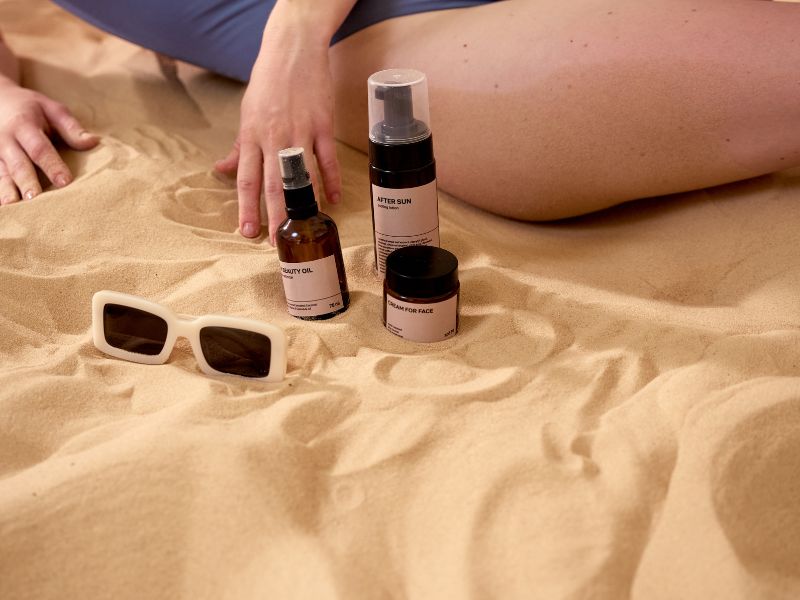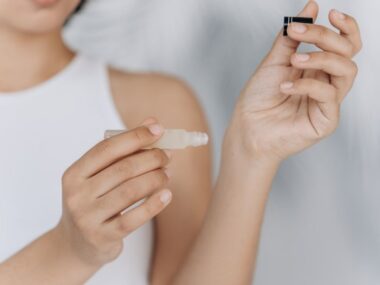When it comes to skincare, sunscreen is often regarded as one of the most effective and essential products for maintaining healthy skin. Yet, many people overlook or underestimate its importance. Sunscreen not only protects against sunburn but also plays a crucial role in preventing skin cancer, premature aging, and other skin-related issues. This article delves into how sunscreen works, why it’s essential, the types of sunscreens available, and the science behind how it benefits the skin. Understanding these aspects can help us make informed decisions about skincare and sun protection.
Table of Contents
ToggleThe Science of Sunlight and Skin Damage
To understand how sunscreen helps, we first need to examine how sunlight affects the skin. The sun emits various types of ultraviolet (UV) radiation, primarily UVA and UVB rays, which differ in wavelength and their impact on the skin.
UVA and UVB Radiation: The Differences
- UVA Rays: With longer wavelengths, UVA rays penetrate the skin more deeply, reaching the dermis, the skin’s second layer. They are associated with skin aging, including wrinkles, dark spots, and loss of elasticity. UVA rays also play a role in skin cancers by damaging cellular DNA over time.
- UVB Rays: These rays have shorter wavelengths and primarily affect the skin’s outer layer, the epidermis. UVB radiation is the main cause of sunburn and plays a direct role in the development of skin cancers, including melanoma, basal cell carcinoma, and squamous cell carcinoma.
Without protection, exposure to both types of rays can result in sunburn, photoaging (premature aging due to sun exposure), and a higher risk of skin cancers. Sunscreen serves as a barrier, absorbing or reflecting these UV rays before they penetrate the skin.
How Sunscreen Works: The Role of UV Filters
Sunscreen contains active ingredients known as UV filters, which work by either absorbing, reflecting, or scattering the UV rays, thereby reducing their impact on the skin. These filters are typically categorized into two types:
Chemical Sunscreens
Chemical sunscreens contain organic (carbon-based) compounds like avobenzone, oxybenzone, octinoxate, and octocrylene. These ingredients absorb UV radiation and convert it into heat, which is then released from the skin. They are effective against UVA and UVB rays but are sometimes criticized due to potential environmental impacts and, in some cases, possible skin irritation for those with sensitive skin.
Physical (Mineral) Sunscreens
Physical sunscreens use mineral-based compounds, primarily zinc oxide and titanium dioxide, which reflect and scatter UV rays away from the skin. These are generally considered safe for sensitive skin and are less likely to cause irritation. Physical sunscreens also begin working immediately upon application, unlike chemical sunscreens, which usually require about 15–30 minutes to be effective.
The combination of these filters, in various formulations, helps prevent both UVA and UVB rays from penetrating the skin and causing damage.
Understanding SPF and Broad-Spectrum Protection
When choosing sunscreen, terms like SPF and “broad-spectrum” are commonly seen on labels. But what do they actually mean?
SPF: Sun Protection Factor
The SPF (Sun Protection Factor) rating primarily measures protection against UVB rays, which cause sunburn. An SPF 30, for example, means that, theoretically, it would take 30 times longer for the skin to burn than without sunscreen. Here’s a general guide to SPF ratings:
- SPF 15: Blocks about 93% of UVB rays.
- SPF 30: Blocks about 97% of UVB rays.
- SPF 50: Blocks about 98% of UVB rays.
While no sunscreen blocks 100% of UV rays, higher SPFs do provide more protection. However, the increase in protection becomes marginal above SPF 50, so it’s not always necessary to go beyond that.
Broad-Spectrum Protection
Broad-spectrum sunscreens protect against both UVA and UVB rays. Since UVA rays penetrate deeper and contribute to skin aging and cancer, broad-spectrum protection is essential for comprehensive skin health. In the U.S., the FDA requires sunscreens labeled as “broad-spectrum” to pass specific tests to verify that they provide adequate UVA protection.
The Benefits of Sunscreen for Skin Health
Using sunscreen regularly has numerous benefits, many of which extend beyond sunburn prevention. Here are some of the primary advantages:
Sunburn Prevention
Sunburn occurs when the skin is overexposed to UVB rays. Repeated sunburns can weaken the skin, lead to inflammation, and increase the risk of skin cancer. Sunscreen with an adequate SPF protects against UVB rays, reducing the chances of sunburn and the subsequent damage it can cause.
Reduced Risk of Skin Cancer
The most significant benefit of sunscreen is its role in skin cancer prevention. Both UVA and UVB rays can damage DNA in skin cells, which can lead to mutations and the development of cancerous cells. Studies have shown that people who regularly use sunscreen have a lower risk of all types of skin cancer, including melanoma, the deadliest form. The American Academy of Dermatology and the Skin Cancer Foundation both recommend daily sunscreen use as part of a proactive approach to skin cancer prevention.
Prevention of Premature Aging
Sun exposure is one of the primary causes of premature aging. UVA rays damage the skin’s collagen and elastin, resulting in wrinkles, fine lines, sagging, and hyperpigmentation (dark spots). By blocking UVA rays, broad-spectrum sunscreens help maintain skin elasticity, smoothness, and an even skin tone, ultimately delaying the visible signs of aging.
Protection Against Hyperpigmentation and Uneven Skin Tone
UV exposure can lead to hyperpigmentation, or dark spots, which often appear as age spots or sunspots. People with conditions like melasma or post-inflammatory hyperpigmentation (PIH) may notice their symptoms worsen with sun exposure. Sunscreen helps control these issues by protecting against the UV radiation that exacerbates pigment production.
Preservation of Skin Health and Texture
Beyond preventing external signs of damage, sunscreen also maintains the overall health of the skin. Regular use reduces inflammation, maintains hydration levels, and protects skin barrier function. The result is skin that’s not only protected but also looks and feels healthier over time.
Choosing the Right Sunscreen for Your Skin Type
Selecting the right sunscreen depends on factors such as skin type, daily activities, and personal preferences. Here are a few guidelines to consider:
Skin Types and Sunscreen Choices
- Oily or Acne-Prone Skin: Look for oil-free or non-comedogenic sunscreens, which are less likely to clog pores. Gel-based or mattifying sunscreens are often suitable for oily skin.
- Dry Skin: Cream-based sunscreens or those with added moisturizers like hyaluronic acid or glycerin work well for dry skin.
- Sensitive Skin: Mineral sunscreens containing zinc oxide or titanium dioxide are usually well-tolerated by sensitive skin types. Avoid sunscreens with fragrances or harsh chemicals that could irritate the skin.
Lifestyle Considerations
- Outdoor Activities: If you spend a lot of time outdoors or engage in sports, consider a water-resistant sunscreen with an SPF of at least 30 or higher. Reapply every two hours and after sweating or swimming.
- Daily Use (Indoor/Minimal Exposure): For daily use when indoors or with limited exposure, an SPF of 15–30 with broad-spectrum protection is usually sufficient. Many daily moisturizers and makeup products now contain SPF, offering easy ways to incorporate sun protection into your routine.
Proper Application and Use of Sunscreen
Applying sunscreen correctly is just as important as choosing the right type. Here are some best practices for effective use:
- Apply Generously: Use about a nickel-sized amount for your face and roughly a shot glass (or two tablespoons) worth for your body. Insufficient application reduces the level of protection.
- Reapply Regularly: Sunscreen should be reapplied every two hours or immediately after swimming, sweating, or towel drying.
- Apply Before Going Outdoors: Chemical sunscreens need about 15–30 minutes to be absorbed and start working. Mineral sunscreens work immediately, but it’s still good practice to apply them before going outside.
- Cover All Exposed Skin: Don’t forget commonly missed areas like the ears, back of the neck, and the tops of the feet. For lips, use an SPF-containing lip balm.
Common Myths and Misconceptions About Sunscreen
Despite widespread availability, misconceptions about sunscreen remain. Here are some clarifications:
- Myth 1: Sunscreen is Only Necessary on Sunny Days. Even on cloudy days, up to 80% of UV rays can penetrate the clouds. UV rays can also reflect off surfaces like water, snow, and concrete, so sunscreen is essential year-round.
- Myth 2: People with Darker Skin Don’t Need Sunscreen. While darker skin has more melanin, which offers some natural protection, it does not block UV rays entirely. People with all skin tones can get sunburned and develop skin cancer, so sunscreen use is still necessary.
- Myth 3: SPF in Makeup is Enough Protection. While makeup with SPF offers some protection, most people don’t apply it in sufficient amounts to be effective. Layering sunscreen underneath makeup ensures full protection.
Environmental and Health Considerations
The increasing use of sunscreen raises questions about its impact on the environment and human health:
- Environmental Impact: Some chemical sunscreens, particularly those containing oxybenzone and octinoxate, are associated with coral bleaching and may harm marine ecosystems. Many eco-conscious consumers now look for reef-safe sunscreens, which typically contain zinc oxide or titanium dioxide as UV filters.
- Health Concerns: Although sunscreen has been deemed safe by regulatory authorities like the FDA, some individuals worry about potential hormone-disrupting chemicals in certain formulations. Mineral sunscreens are often recommended for those who prefer a more natural approach.
Conclusion
Sunscreen is an indispensable part of skin health and protection, offering numerous benefits, from preventing sunburn to reducing the risk of skin cancer and premature aging. Understanding the science behind sunscreen, choosing the right product for your skin type, and applying it correctly are all key to maximizing its protective benefits. In an era where skin cancer rates are rising and environmental concerns are growing, making informed choices about sun protection can significantly impact both our health and the health of the planet.






